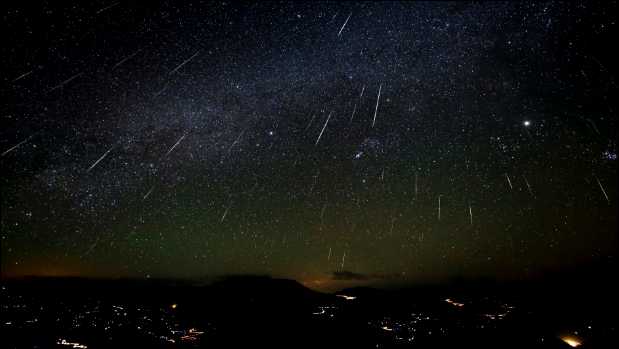|
The Feel-Good Guide to Sports, Travel, Shopping & Entertainment
|
| Main | Sports Events | Holidays & Observances | Pop Culture | Shopping | Travel |
|
MAIN
The Geminid meteor shower is an annual meteor shower that is extremely regular in its timing and can potentially be visible for days in the late-autumn sky, depending on weather and location.
Beginning in early December, the Geminid meteor shower grows in intensity to finally reach its zenith on the night of December 13 and continue overnight into the early morning hours of the 14th. In 2023, the Geminids coincide with a nearly full moon, promising less than optiumum viewing. (Pro Tip: increase your chances of seeing the brighter asteroids facing in a direction with your back to the moon.) Even with competition from moonlight, the Geminids can be pretty spectacular as they streak across the night sky. Watch for the brightest falling stars usually peaking at around 2AM. Look east in the early evening, (or straight up later in the wee morning hours) as meteors speed into the atmosphere at 140 kilometers an hour. The Geminid meteor shower is named after the constellation Gemini, which is located in roughly the same point of the night sky where the Geminid meteor shower appears to originate from. In late autumn or early winter, that means viewing the spectacular light show at their peak with eyes pointed straight up in the night sky.
Each December, Earth passes through the debris cloud left by the comet as sand-sized specks enter the earth's atmosphere producing a spectacular show of "shooting stars."
The best place to observe the Geminid meteor shower (or any meteor shower for that matter), is somewhere dark, away from light pollution, and with the moon out of the field of vision. The less light visible, the more brilliant the meteor shower will be.
While mostly viewable to the naked eye, the annual Geminid meteor show may be in any year partially obstructed by the moon, clouds or night mist, so amateur astronomers might want to carry along a pair of binoculars or a camera with a telescopic lens. Even on clear nights, some kind of viewing aid may come in handy for catching sight of even the faintest of falling stars, aptly named "telescopic" meteors. On super clear nights, experts advise to forget the telescope and simply ... look up! For photographing
the annual event, a digital camera mounted on a tripod helps to
steady the images that swiftly move across the sky. A quick trigger
finger also helps, but even random clicks during the height of
Geminid "prime-time" will guarantee that you'll
catch something. Be sure to have the camera focused on infinity
and, if your camera permits, leave the shutter open for several
minutes for the most spectacular photographic effects.
EarthSky's Meteor Shower Guide - Find historical details and current best-viewing guide date and times for this year's major celestial events. Geminids - Wikipedia - Read up on extensive background facts and historical information on Geminid sightings through the centuries, with photos and illustrations, related references and resources. About Meteors - Check out a brief but informative overview of common terms that help identify various sizes and types of meteors.
|


